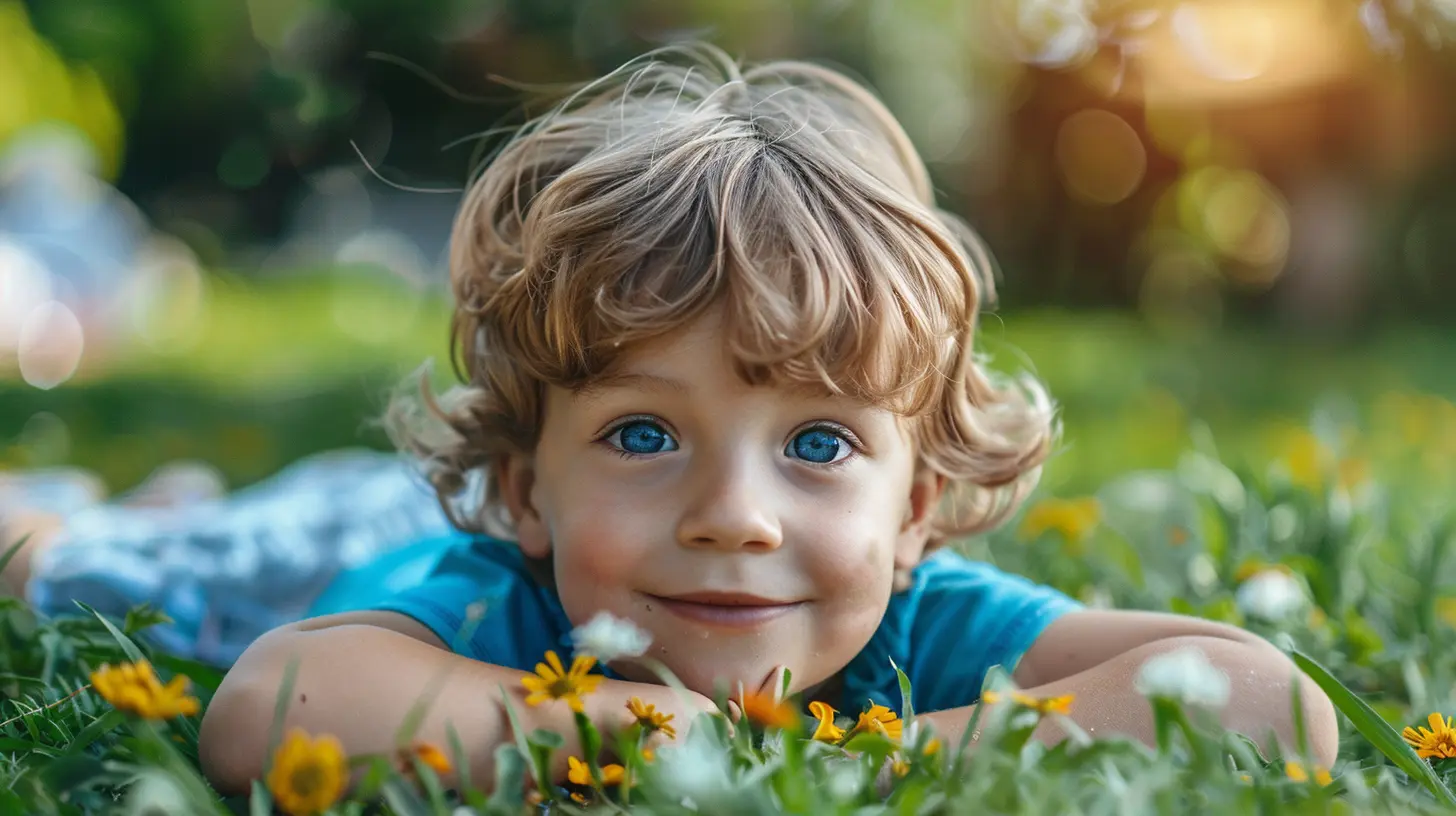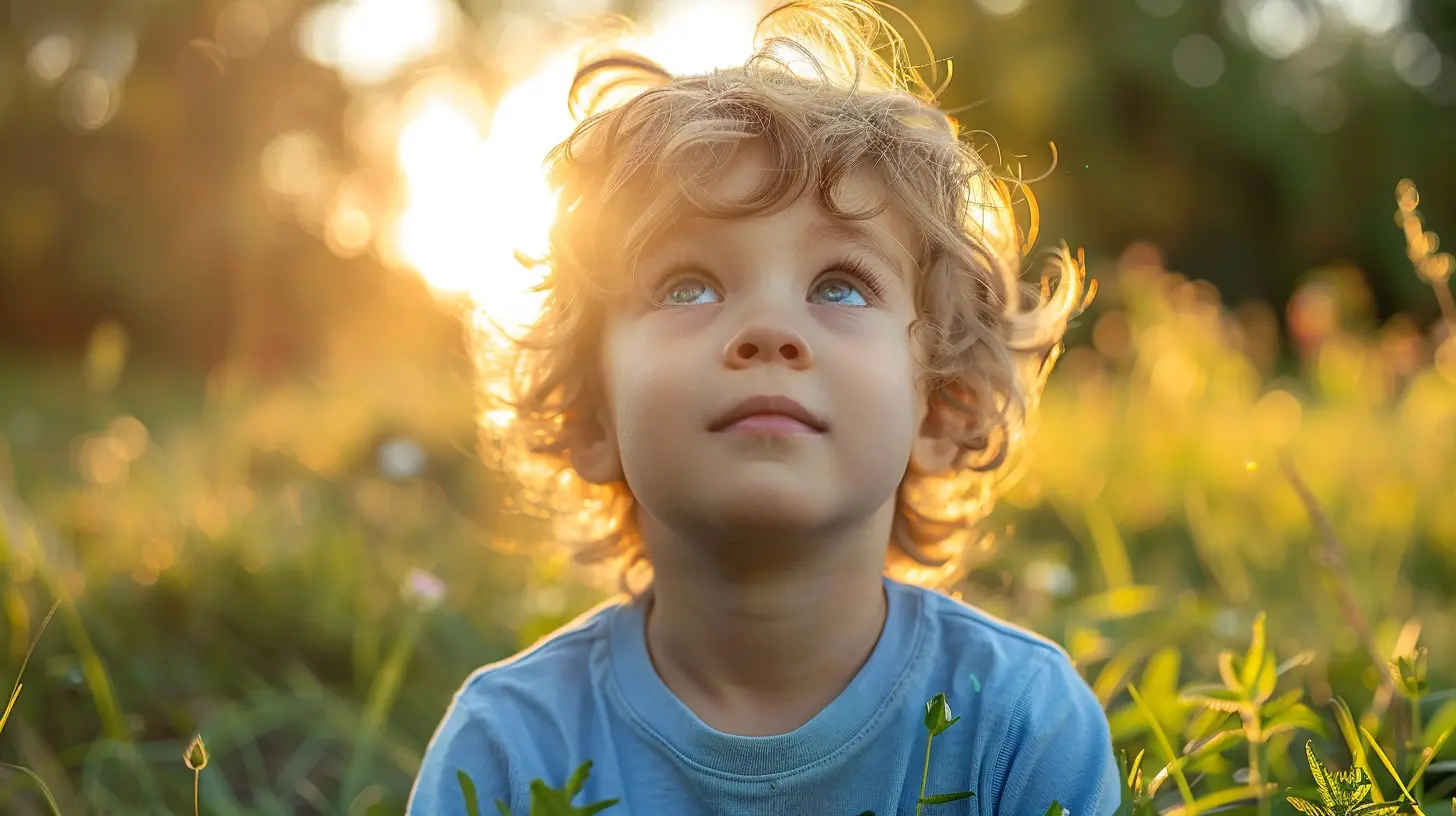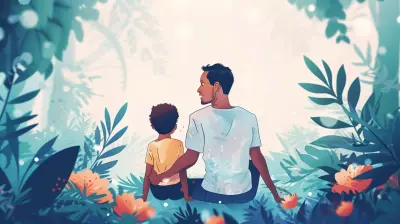Potty Training Tips for Preschool-Aged Kids
24 September 2025
Potty training. Just hearing those two words is enough to make any parent sigh, chuckle, or maybe even shudder. If you're standing at the crossroads of toddlerhood and big-kid territory, welcome to one of parenting’s wildest rides. Don’t worry though — you're not alone, and it doesn’t have to be a battle of wills. With the right mindset, heaps of patience, and the right approach, you'll both get through it (mostly dry).
In this guide, we’ll unravel tried-and-true potty training tips for preschool-aged kids, with a sprinkle of humor and a whole lot of empathy. Because honestly, who said teaching someone to pee in a tiny plastic chair couldn’t be entertaining?

Why Preschool Age is a Prime Time to Potty Train
Ever tried potty training a toddler who’s not interested? Yeah, it’s like trying to nail jelly to a wall. Preschoolers, typically between ages 3 and 5, are often more emotionally and physically ready. They can communicate better, follow simple instructions, and—let's be real—they usually hate the feeling of a wet diaper.Plus, if your child is heading to preschool or pre-K soon, many programs require kids to be potty trained before they can attend. No pressure, right?
Signs Your Child Might Be Ready
Let’s press pause here because readiness is key. Just because they're a certain age doesn’t automatically mean it’s go-time. Look for these telltale signs:- They stay dry for two hours or more.
- They can pull down their own pants.
- They tell you when they need to go or have already gone.
- They’re curious about the toilet (or maybe even want to copy you).
- They dislike being in a dirty diaper.
If your kiddo checks most of these boxes, it’s probably time to gear up.

Creating a Potty-Positive Environment
The first step in potty training success? Ditch the fear. Kids feed off your energy. If you're stressed, they’ll feel it. And I mean, come on — who wants to perform under pressure?Talk the Potty Talk
Start by talking casually about the toilet. Explain what it’s for and why we use it. Keep it lighthearted. Maybe even read a few fun potty-themed books together. There are plenty out there that make poop and pee downright delightful (who knew?).Pick the Right Equipment
Toilet too big? That’s scary for tiny buns. Invest in a potty chair or a toddler-sized seat that fits on your regular toilet. Let your child help choose it — it adds a touch of excitement and ownership.Some parents swear by stand-alone potty chairs since they’re low to the ground and less intimidating. Others prefer inserts for the big toilet. Either way, don’t forget a sturdy step stool for those tiny feet.

Timing Is Everything
Let’s be honest: potty training during a move, a new baby, or any life upheaval? Not ideal. Pick a time when things are relatively calm and you can focus. Plan a potty training weekend or a few consecutive days when you'll be at home, available, and ready to guide (and clean up).
Let Them Lead (With Gentle Nudges)
Kids love control — especially the preschool set. Give them choices: "Do you want to use the big potty or the little one today?" or "Should we try after lunch or before the movie?" This strategy works wonders because it gives them a sense of autonomy without pressure.But hey, let’s be real — some kids are super resistant. If your child flat-out refuses to participate, back off for a few days or even weeks. Potty training is not a race, it’s a marathon where everyone eventually crosses the finish line.
Consistency Beats Perfection
If you’ve ever trained a puppy, you’ll understand this rule: consistency is everything. Kids thrive on routine. Try these consistency tools:- Potty Schedule: Encourage toilet trips after waking up, before bed, and after meals.
- Verbal Cues: Use the same phrases every time, like “Let’s use the potty now!” or “Time to try!”
- Praise: Celebrate effort, not just success. “Wow, you told me you needed to go! That’s amazing!”
But remember, life is messy. Accidents will happen. It's all part of the process.
Ditch the Diapers (At the Right Time)
Big move alert! When your child shows signs of progress, ditch the daytime diapers. Yes, there will be leaks. Yes, you’ll need extra clothes. But taking them out of the comfort of diapers is a sign of trust — you believe they can do this.Want to add some flair? Take them shopping for “big kid underwear.” Whether it’s dinosaurs, princesses, or cartoon toilets (okay, maybe not that one), let them choose.
Nighttime dryness? That’s a whole other story. Many kids don’t stay dry through the night until age 5 or older. Don’t sweat it — use pull-ups or mattress protectors and revisit this goal later.
Make It Fun!
It’s a weirdly intimate and awkward process, so why not have some fun? Here are a few ideas to make potty training feel more like a game than a chore:- Potty Charts: Stickers. Need we say more?
- Flushable Targets: Boys in particular love these. Who doesn’t want to aim at something?
- Potty Dance: Yes, it’s goofy. Yes, that’s the point.
- Rewards: It doesn’t have to be candy. Think stamps, extra storytime, or a special trip to the park.
Handle Accidents Like a Pro
Let’s just tear off the Band-Aid and say this — accidents are inevitable. Your best bet? Respond like it’s no big deal. Like, “Oops! That happens sometimes. Let’s clean up and try again next time.”Avoid shame or guilt trips. The toddler brain is incredibly smart — and sensitive. Keeping the vibe positive goes a long way.
What to Do When Potty Training Stalls
Sometimes you’re cruising along and suddenly, boom — your child refuses to go near the toilet. Regression is normal, especially during big life changes.Here’s the thing: it’s okay to take a break. Potty training isn’t a one-and-done deal. Some kids need a little time before they’re fully ready. Try to resist comparing your child to others. This is their individual journey.
Special Considerations for Stubborn Potty Trainers
Got a “nope” child on your hands? You know the type — strong-willed, independent, and totally uninterested in your timeline. Here's how to ease the tension:- Use Reverse Psychology: “I bet you can’t use the potty all by yourself.” Works like a charm.
- Involve Imaginary Friends or Toys: Let their favorite stuffed animal “go potty” too.
- Turn the Tables: Let them teach a doll how to potty train. Kids love being the expert.
When to Seek Help
If your child is older than 4 and still has no interest or is experiencing consistent issues like constipation or fear of the toilet, it might be time to check in with your pediatrician. Sometimes medical or developmental challenges can play a role, and it’s best to address them early.
Real Talk: Every Kid is Different
One child might be trained in a weekend. Another might take months. It doesn’t say anything about you as a parent — or about your child. Potty training is one tiny (okay, sometimes very messy) step on the road to independence.Celebrate the victories, laugh off the mishaps, and stock up on coffee. You're doing great!
Frequently Asked Potty Training Questions
1. What if my child is scared of flushing?
Totally normal! That loud whoosh can be terrifying. Let them control the flush when they’re ready – or even pretend to “flush away” fears with a little pep talk.2. Can I potty train my child if they go to daycare?
Absolutely. Just communicate with daycare staff, establish a consistent routine, and use the same language and rewards both at home and in child care. Teamwork makes the pee-work, right?3. Should I use pull-ups?
Pull-ups can help during naps or outings, but they’re best used as a stepping stone. If your child treats them like a diaper, switch to underwear as soon as possible.4. How can I reward potty success?
Keep it simple. A sticker, a high-five, or a silly dance can be just as motivating as candy. The key is immediate positive reinforcement.5. What about nighttime training?
Night training often lags behind daytime success. Many children aren’t physically able to stay dry overnight until later. Keep using pull-ups or training pants for sleep time, and talk with your pediatrician if you're concerned.Final Thoughts
Potty training doesn’t require a Ph.D., a course in psychology, or even perfectly timed sticker placement. It just takes patience, perspective, and sometimes a healthy sense of humor. Your child will get there — and so will you.And remember... every flush is a step forward.
all images in this post were generated using AI tools
Category:
Parenting PreschoolAuthor:

Maya Underwood
Discussion
rate this article
1 comments
Stacey McNeal
While the article provides practical tips for potty training preschoolers, it could delve deeper into the emotional aspects of this transition. Acknowledging the potential anxieties children may face and offering strategies to foster a supportive environment could enhance the guidance, ensuring a more holistic approach to this developmental milestone.
September 29, 2025 at 4:22 PM

Maya Underwood
Thank you for your insightful feedback! I appreciate your suggestion to explore the emotional aspects of potty training, and I'll consider adding strategies to support children's anxieties in future updates.


